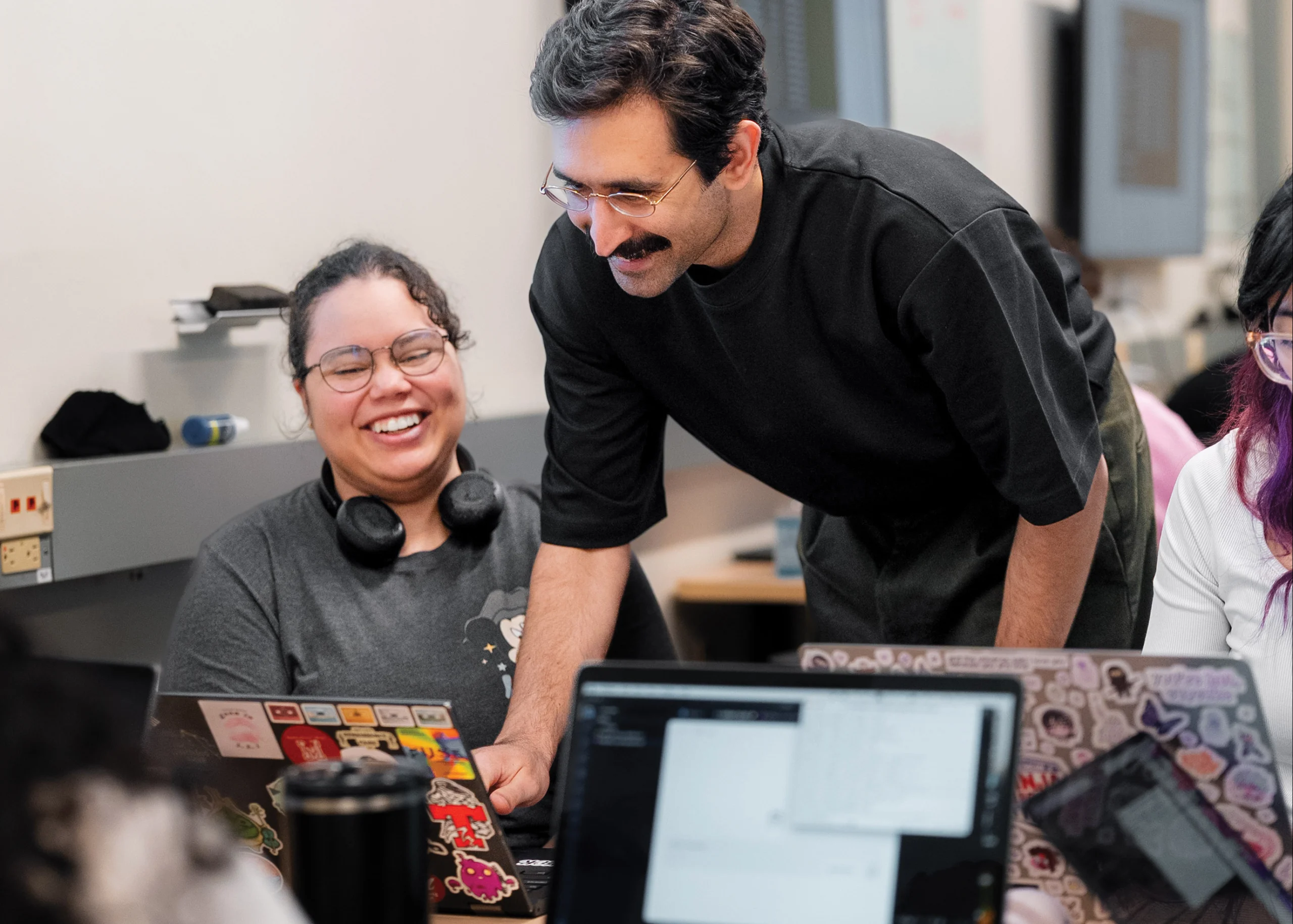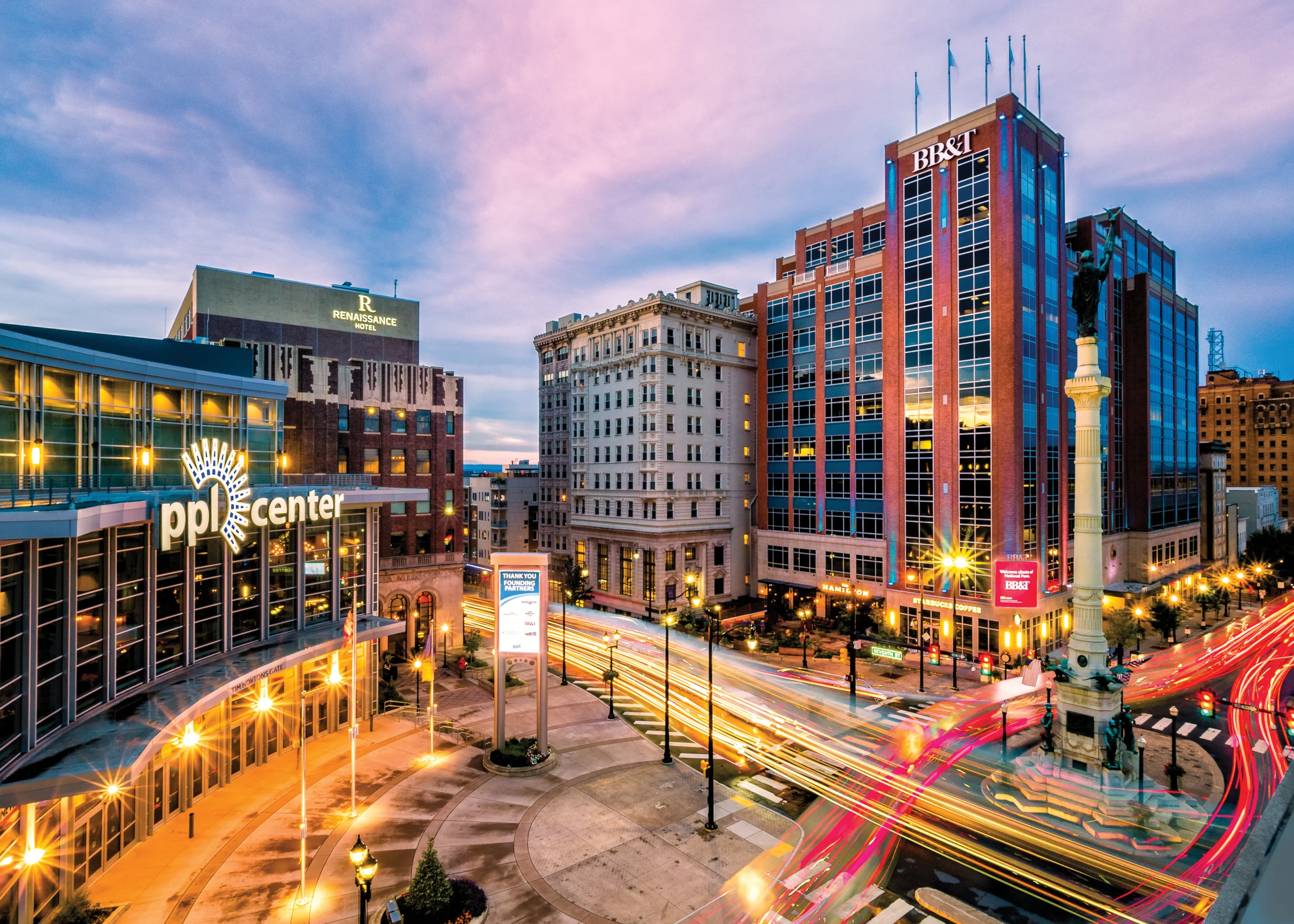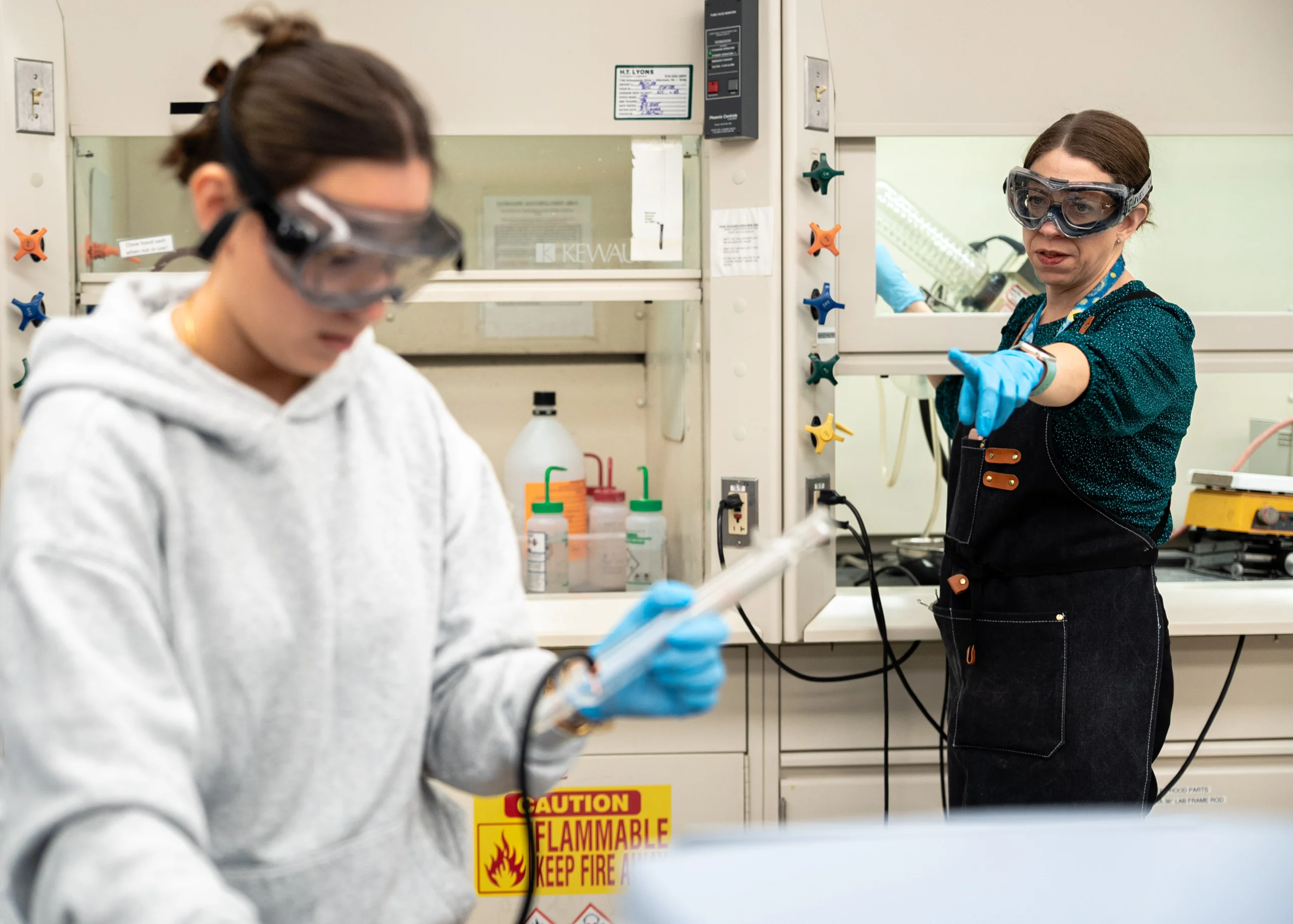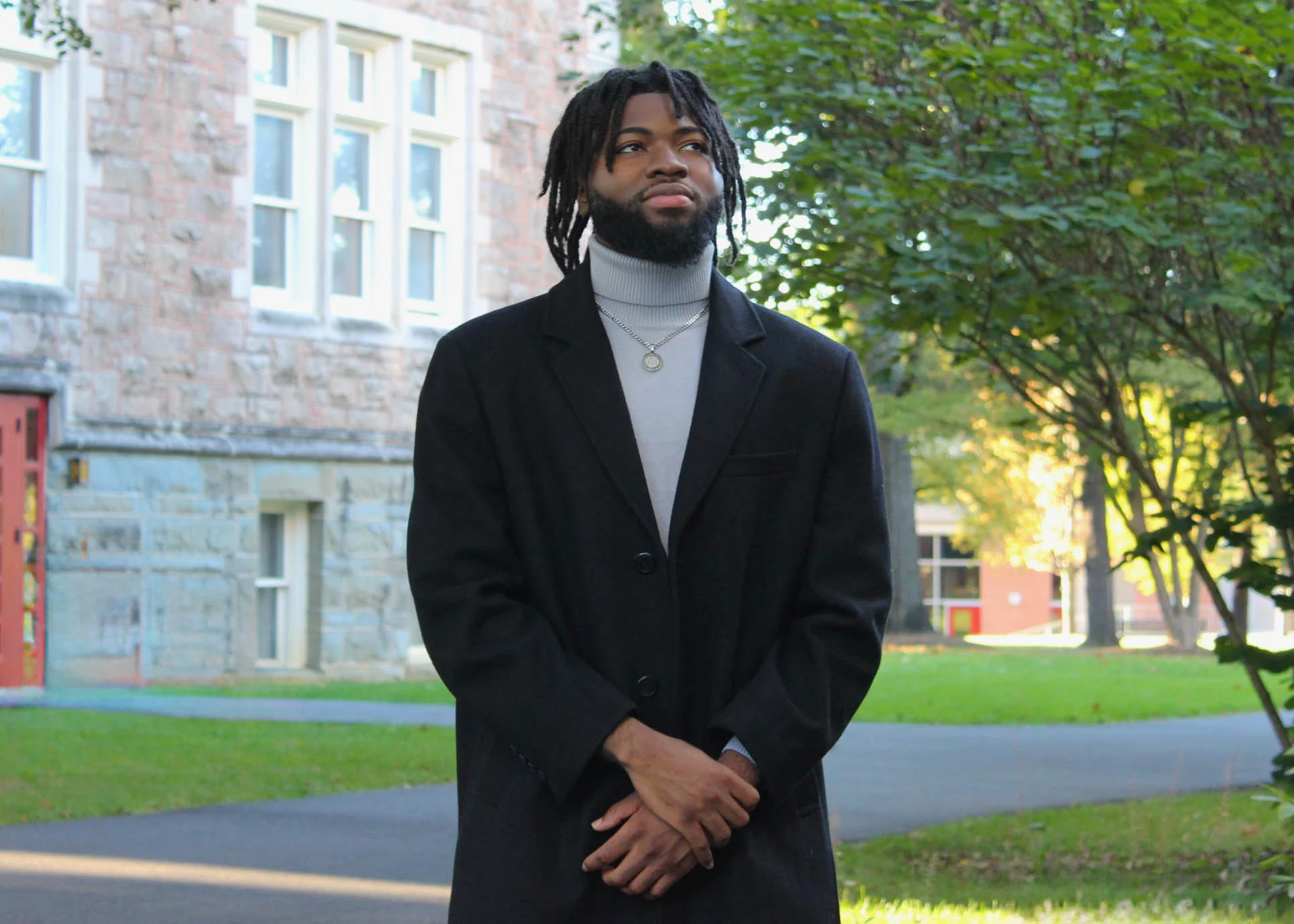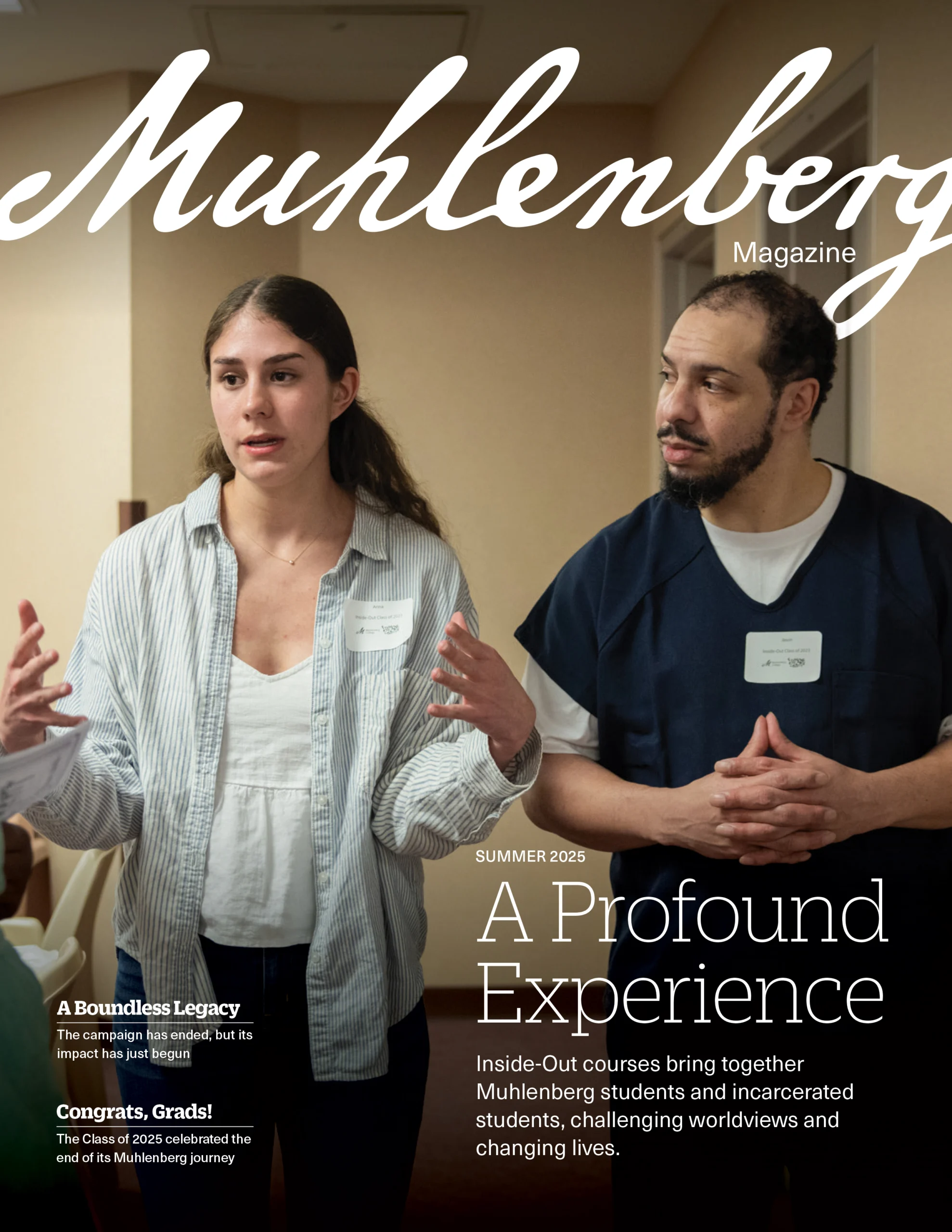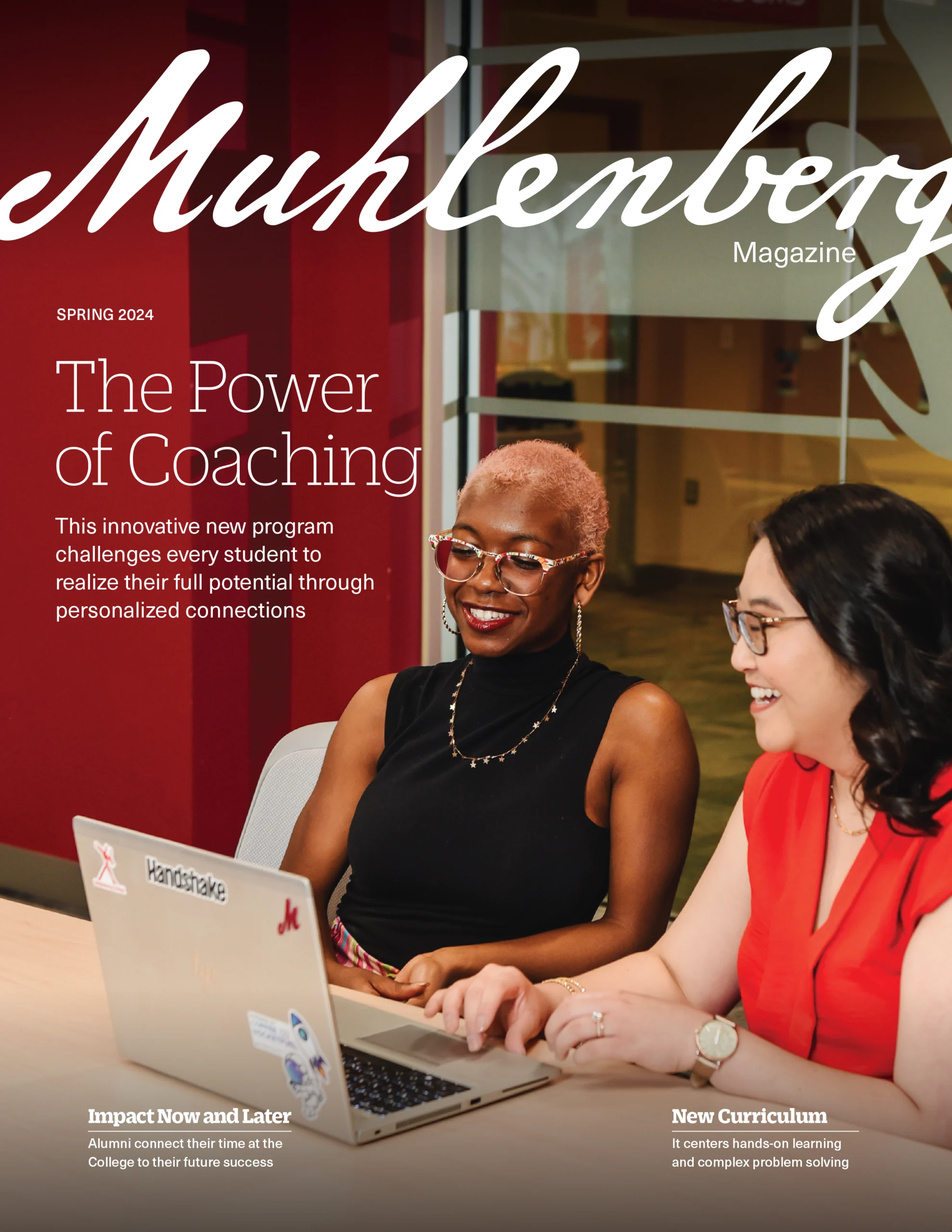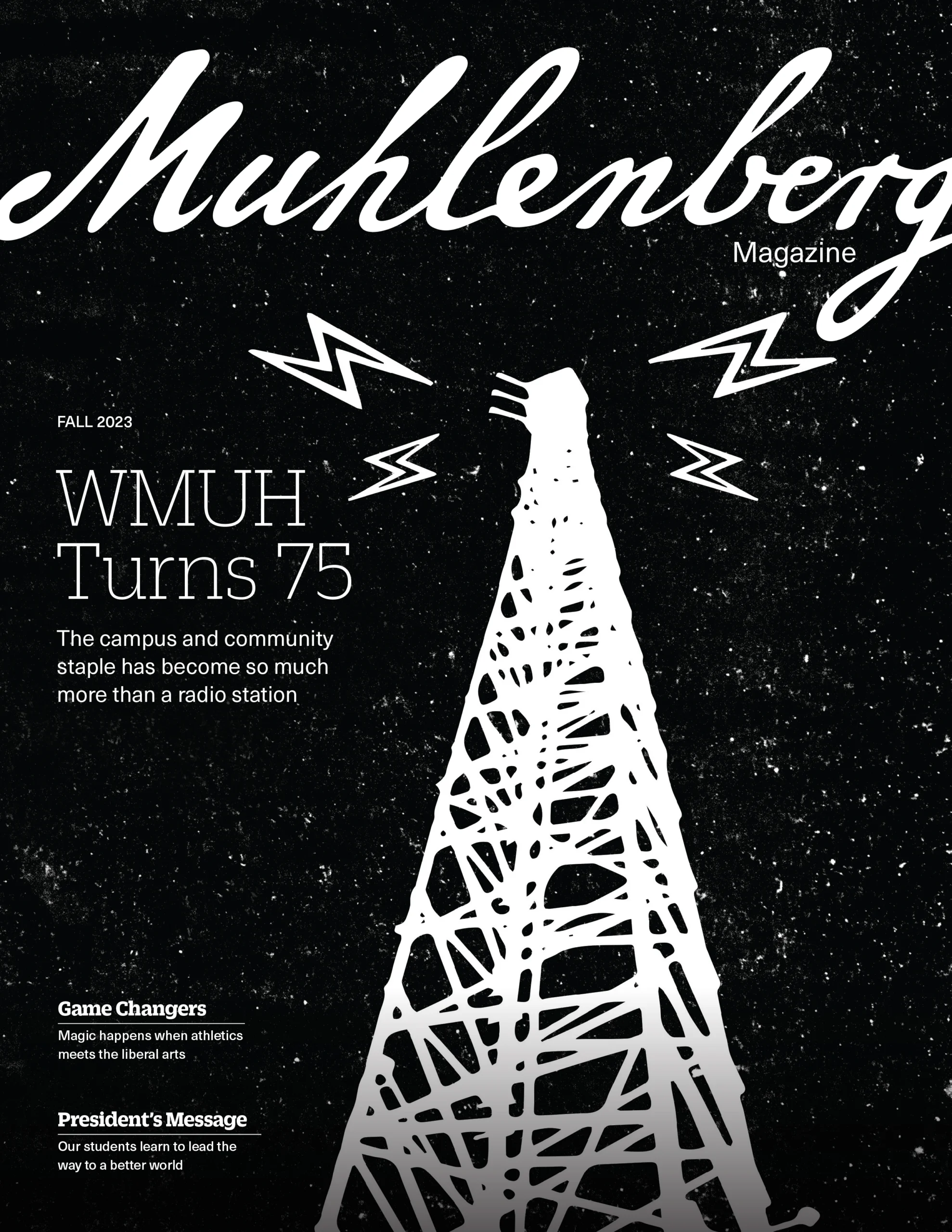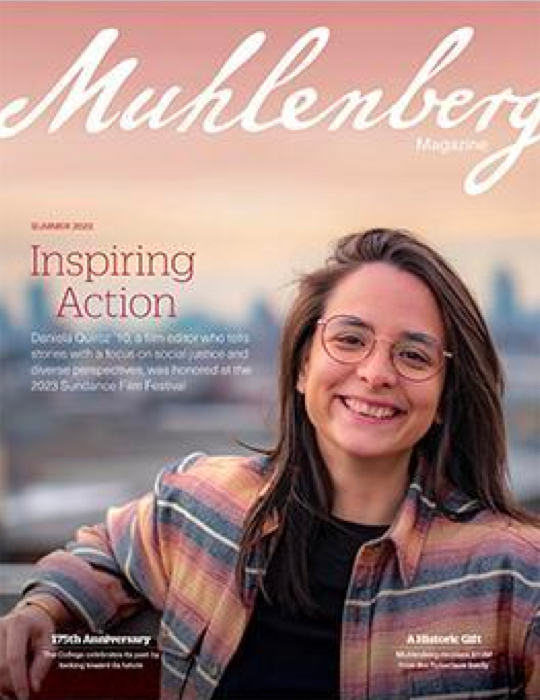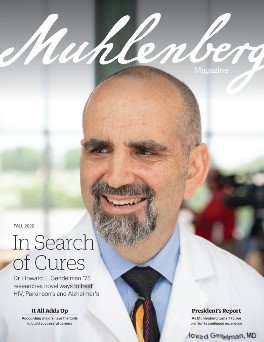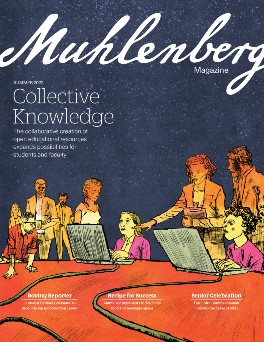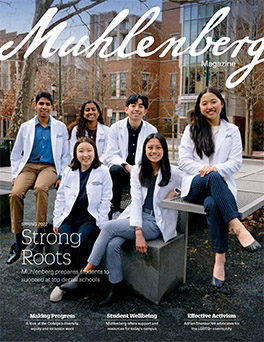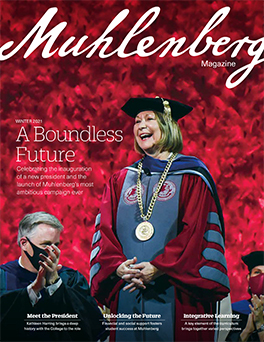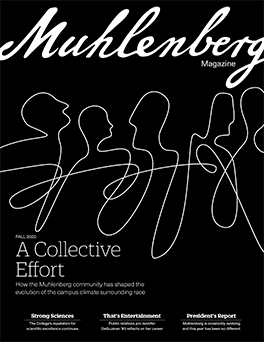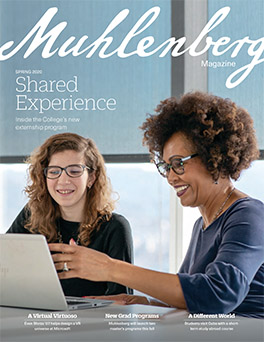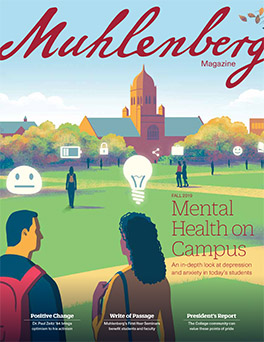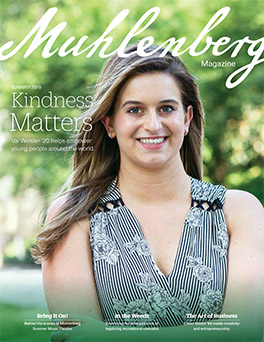
Bold Ambition, Bold Investment
Muhlenberg celebrates its 175th anniversary and looks ahead toward a boundless future.
Muhlenberg’s 175th anniversary celebration brought alumni, friends of the College, faculty, staff and students together for a weekend-long series of gatherings, including a gala in the Wood Dining Commons, the dedication of The Fahy Commons for Public Engagement and Innovation and other events open to the campus and local communities.
In her remarks at the gala, President Kathleen Harring referred to the History of Muhlenberg exhibition that was on display in the Light Lounge: “It’s easy to forget that, leading up to each one of these moments [in Muhlenberg’s history], there were days, weeks, months, sometimes years when the people of this College were striving, sometimes struggling, to make these things happen — together,” Harring said. “Let’s focus on the ‘together’ part for a moment. It is the foundation of our 175 years of excellence and achievement … Our community-driven excellence defines us. It differentiates us. It gives us an advantage. It’s one of our superpowers.”
Also at the gala, the co-chairs for Boundless: The Campaign for Muhlenberg announced that its goal would be increased from $111 million to $125 million. This followed a big announcement from Harring, that Muhlenberg would receive a $15M+ gift from the Robertson family, the largest gift from an individual or family in the College’s history. At the earlier dedication, attendees could tour the new Fahy Commons and learn more about its groundbreaking sustainability features. Here, take a deeper dive into these pivotal developments that will lead the College into its next 175 years.
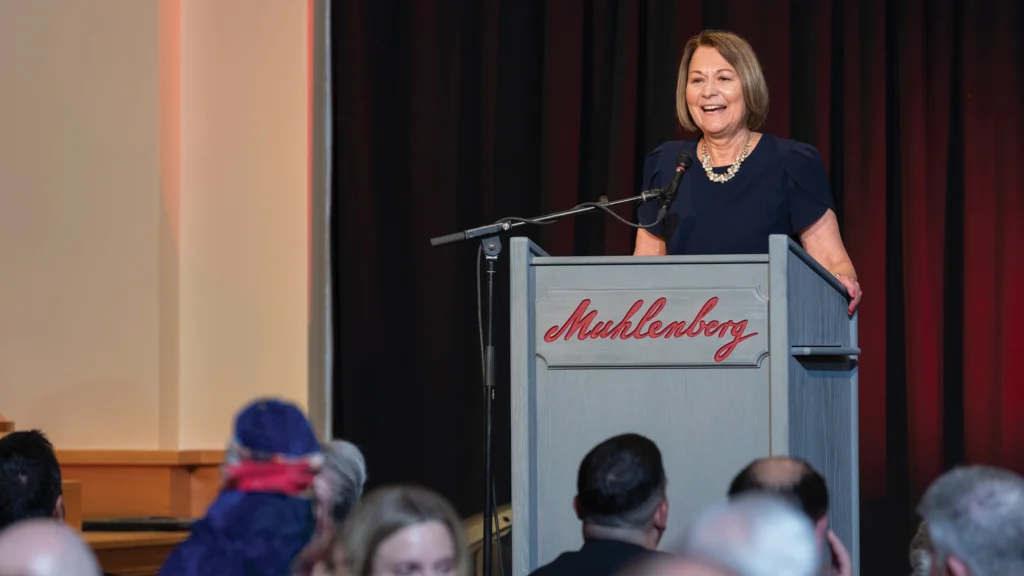
A Boundless Vision for Continued Success
The culminating moment of Muhlenberg’s 175th anniversary gala on Friday, April 28, came when Mark Paris ’80 P’16 took the podium. Paris was the third of three co-chairs of the Boundless campaign to speak. The first, Doug Peebles ’87, provided a refresher course on the campaign’s history and its seven priorities, including student financial aid, endowed professorships and capital projects. Then, Tammy Bormann ’83 P’16 recognized the campaign’s volunteers and donors who’ve made leadership gifts, including $7.5 million from Gerald P. Fahy ’79 and Cathleen A. Fahy for The Fahy Commons for Public Engagement and Innovation and $4 million from James R. Lentz ’66 and Debra A. Lentz for endowed professorships in theatre and dance.
Paris began his remarks with the lessons the co-chairs have learned so far from the campaign, which launched publicly in November 2021. First, student need is greater than expected, largely due to ripple effects from the pandemic. Second, the skills and capacities students build at Muhlenberg are increasingly valuable, as the working world rapidly transforms. And third, donors have responded to the campaign’s priorities with immense generosity.
“But we all know that this story isn’t over. There is more work to be done,” Paris said. “Our ambitions and hopes for Muhlenberg to be transformational, aspirational and innovative are real. President [Kathleen] Harring has said many times: ‘Bold ambition requires bold investment.’ I believe that right now is the perfect time to elevate what the campaign is and what it will do for our College. It’s time to show the rest of the world that Muhlenberg is bold.”
As he announced the new campaign goal — $125 million, an increase from $111 million — red and blue confetti fell from the balconies and the crowd applauded.
The campaign goal was increased for the three reasons Paris shared in his gala remarks, says Vice President for Advancement Rebekkah Brown ’99. $99,000,000 has been raised to date, or nearly 80 percent of the campaign’s revised goal.
“The Boundless campaign comes at a pivotal moment for Muhlenberg, and its success will help ensure the quality Muhlenberg education we have come to know and expect will be provided for generations to come,” Brown says. “The Muhlenberg community has stepped up to show unprecedented support of the College.”
Five of the campaign’s seven goals increased, including those for student financial aid, the Muhlenberg Annual Fund, integrative learning and high-impact practices, The Muhlenberg Network and the Seegers Union expansion. An architect has been secured for that expansion, which is to include classroom and gathering spaces, a relocated Office of Alumni Affairs, a major events space and an enhanced Career Center.
“Like Muhlenberg College itself, philanthropy is a collective effort,” says Harring. “It creates a whole that’s greater than the sum of its parts. We aim ever higher as an institution, and it’s so rewarding to know that our community continues to support our aspirations to reach new levels of community-driven excellence.”
“Our community-driven excellence defines us. It differentiates us. It gives us an advantage. It’s one of our superpowers.”
— President Kathleen Harring
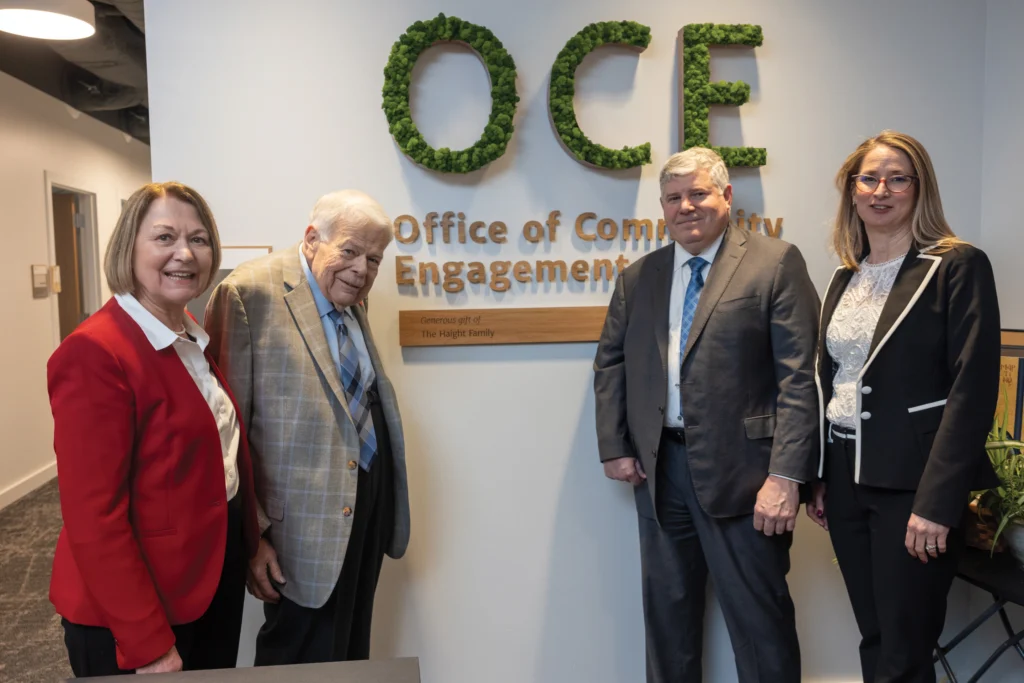
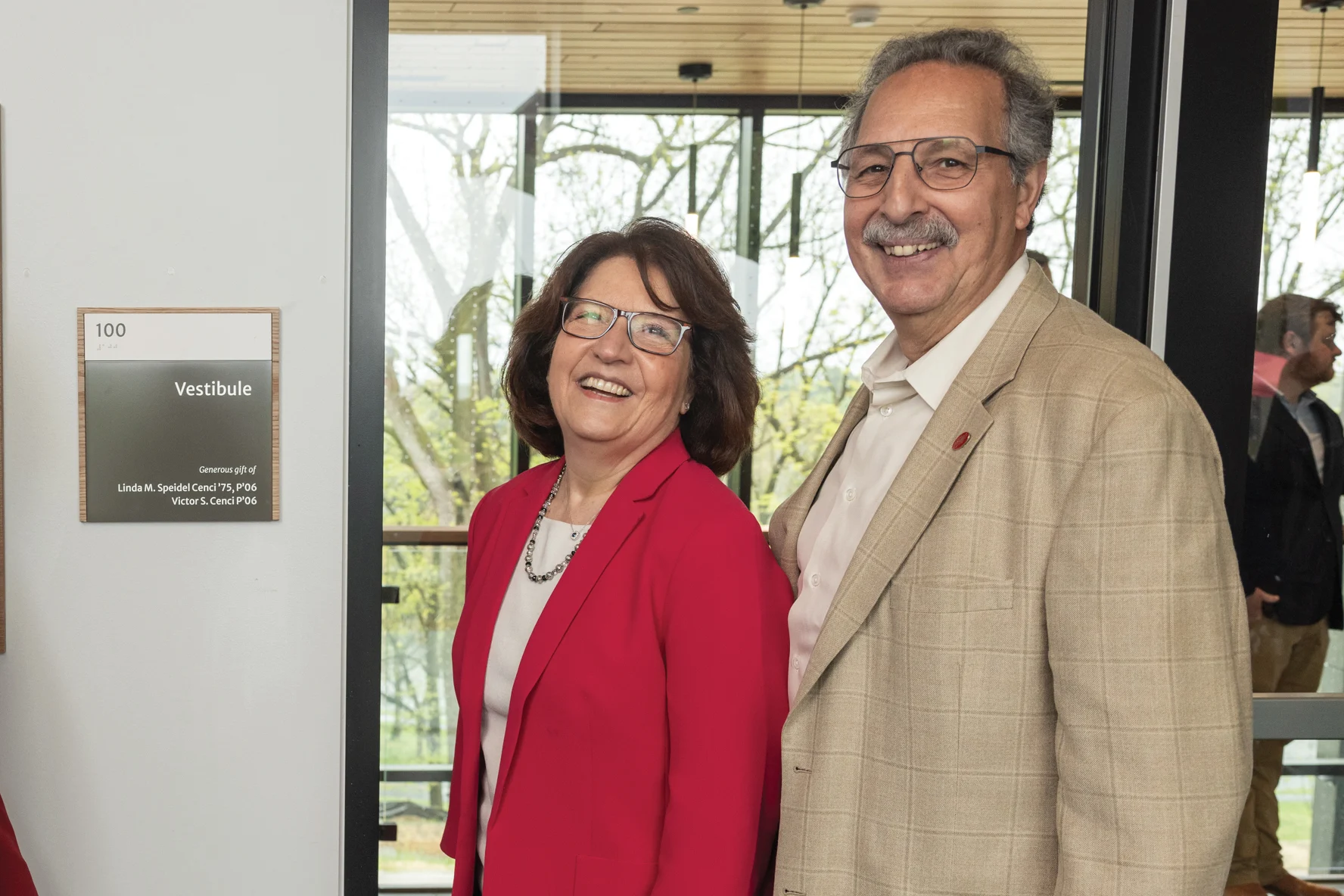


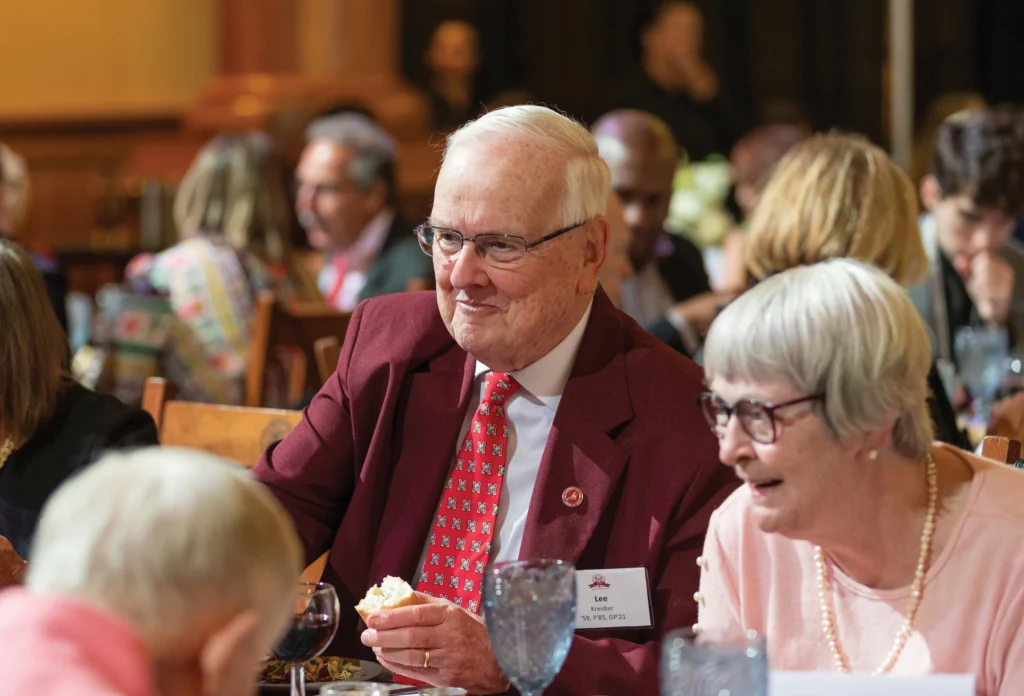
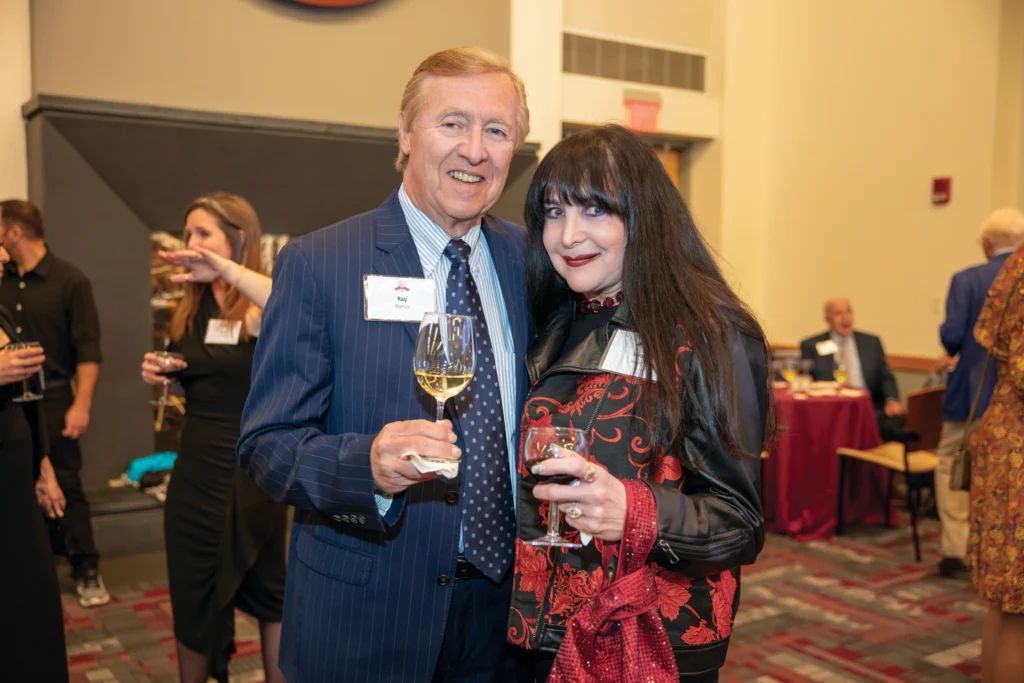
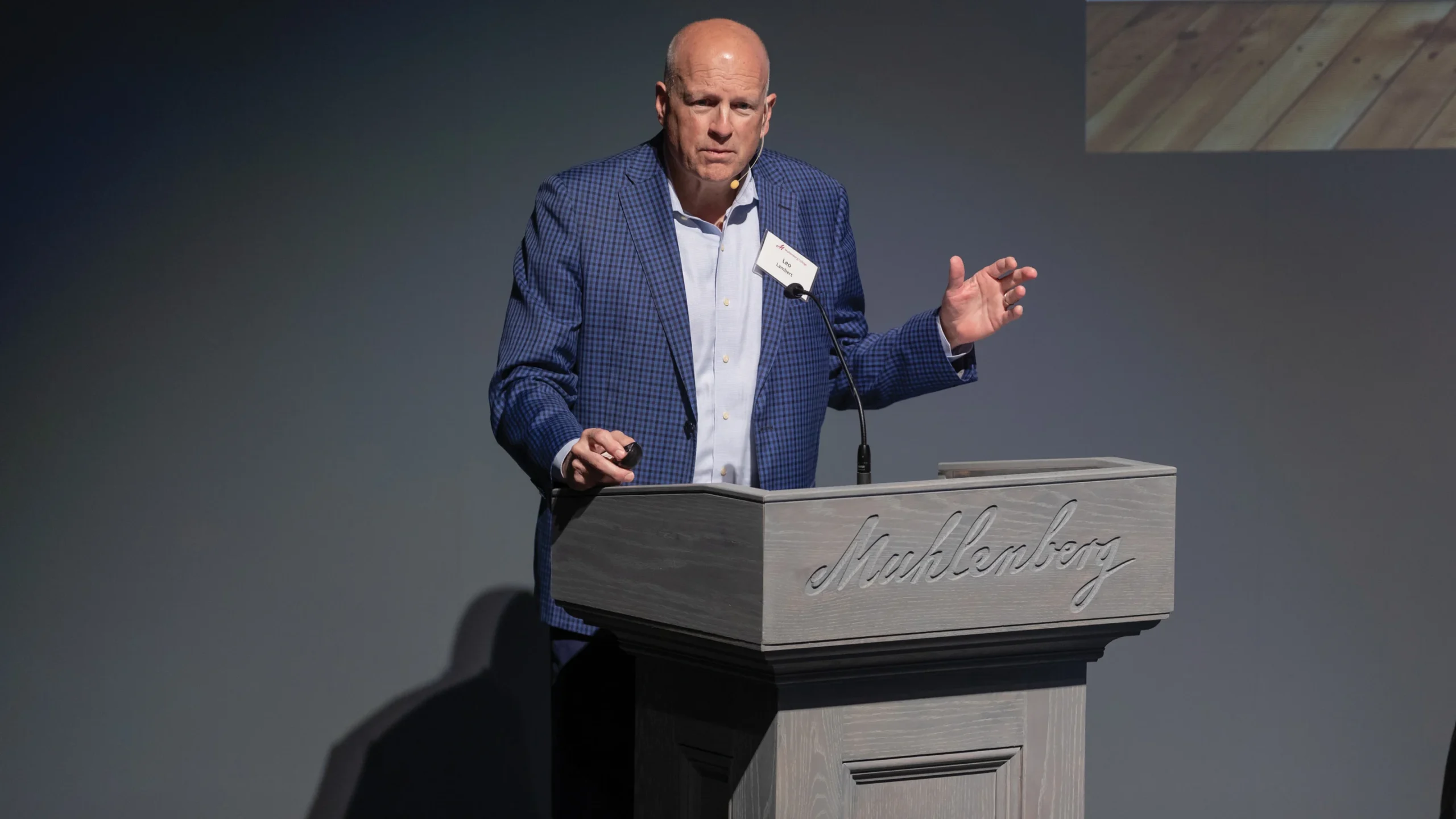
“This milestone is emblematic of the innovative spirit that embodies the Muhlenberg College I’ve come to know.”
— Allentown Mayor Matt Tuerk
A Space With an Innovative Spirit
During Muhlenberg’s 175th anniversary celebration, on a cold, rainy, windy afternoon, the College and Lehigh Valley communities gathered under a tent in front of The Fahy Commons for Public Engagement and Innovation for its dedication. In her remarks, President Kathleen Harring joked that the rainy weather was a positive thing — the building, constructed to the highest standards of sustainability, collects rainwater that is used to flush the toilets.
One of the speakers was Allentown Mayor Matt Tuerk, who reflected on the many partnerships between Muhlenberg and the city of Allentown — the students conducting watershed testing in city parks, for example, and the alumni now working in local government — and how they related to the opening of this unique building: “This milestone is emblematic of the innovative spirit that embodies the Muhlenberg College I’ve come to know,” he said.
Next, Board of Trustees Chair Dr. Lance R. Bruck ’89 P’21 spoke about the Boundless campaign goals and successes so far: “How will we equip our students, faculty, staff and community members with the on-campus resources and spaces they need to succeed? Behind me is a 20,000-square-foot answer to that question,” he said. “Welcome to the Fahy Commons. This building demonstrates to the Muhlenberg community the impacts of boundless generosity.”
Bruck, Gerald P. Fahy ’79, Cathleen A. Fahy, Harring, Tuerk and Vice President for Advancement Rebekkah Brown ’99 used giant scissors to cut a symbolic ribbon in front of the building, which has been open to the campus community since the start of the spring semester. Guests were able to tour the building following the dedication — and you can, too, at muhlenberg.edu/fahycommons. Here are a handful of highlights.


The Fahy Commons for Public Engagement and Innovation

From Trees to Tables
When construction began on Fahy, Department of Theatre & Dance Technical Director Eric Covell met with the arborist charged with removing the trees within the building’s planned footprint. They collaborated to ensure the trees were taken down in a way that would maximize the yield of wood. Covell constructed one countertop, five benches and six tables (including this one) from the black walnut, sycamore, pine and maple trees that once stood where Fahy is now. The furniture can be found inside and in front of Fahy.
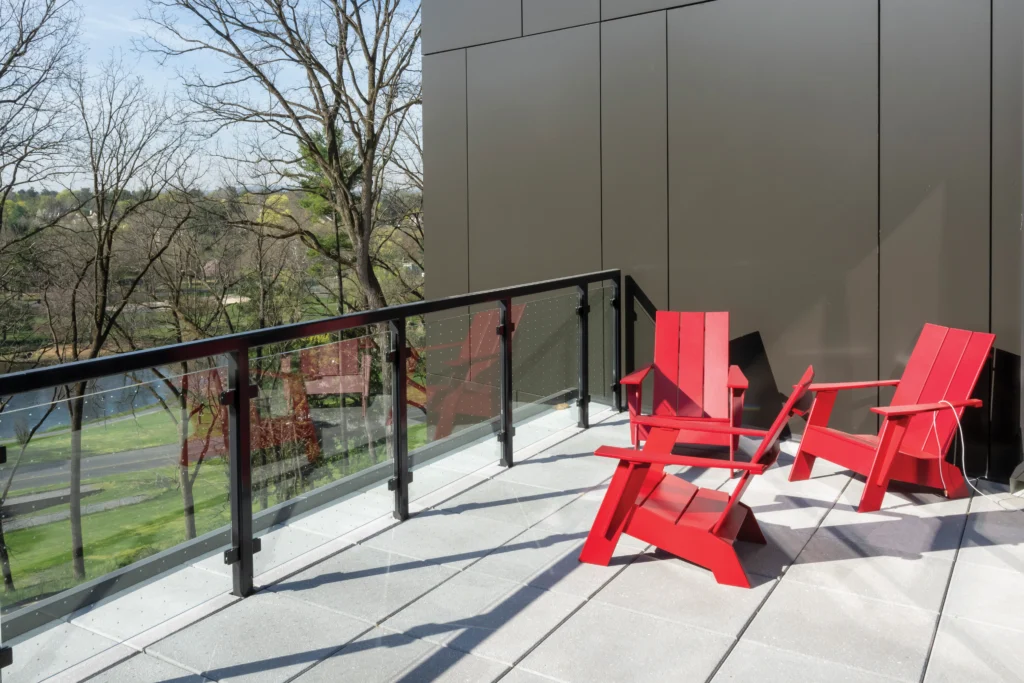
Clearly Safer for Birds
Fahy’s expansive windows are made with bird-safe glass, which is covered in small, translucent circles spaced in a grid that enable birds to see (and avoid flying into) the windows. The grid pattern is based on research conducted by Professor of Ornithology and Conservation Biology Daniel Klem about how to reduce bird-window collisions. The glass itself was manufactured by Mike McGrory ’93, a former student of Klem’s. The building’s smaller windows, like those in the offices, have a feather-friendly film that Klem helped develop laminated to the exterior pane of glass.
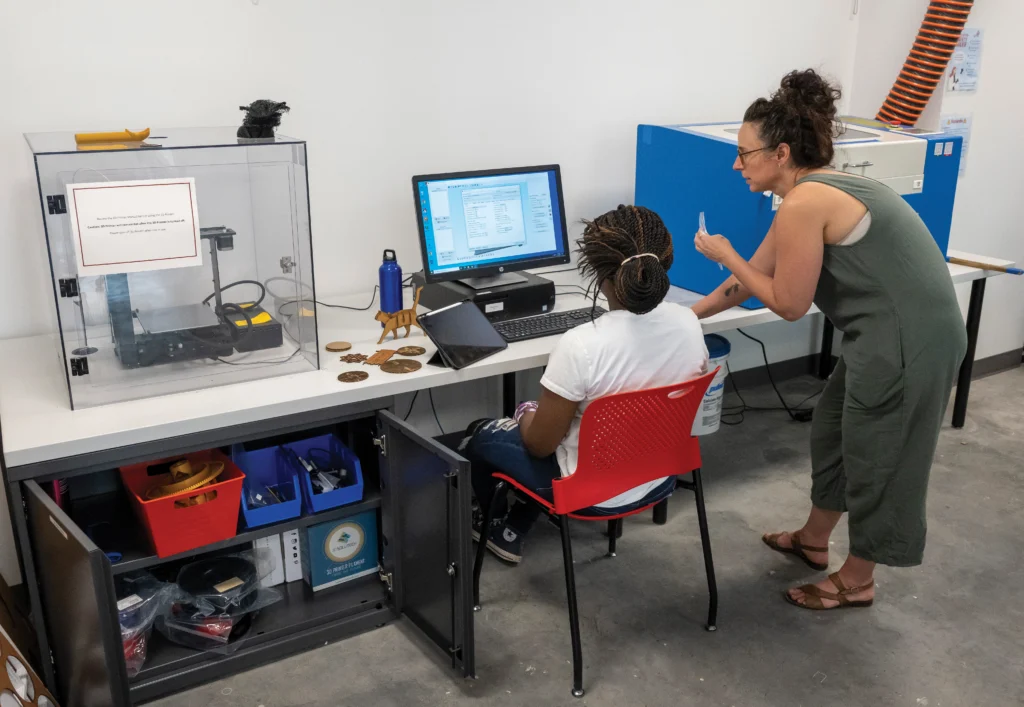
A Place to Create
The Makerspace inside Fahy Commons contains technology including 3D printers, a laser cutter, a computer numerical control (CNC) machine, heat
presses and sewing machines. While the Innovation & Entrepreneurship Program is now housed in Fahy (and INE students are likely to need some of these technologies as they complete their coursework), the Makerspace is open to all students.
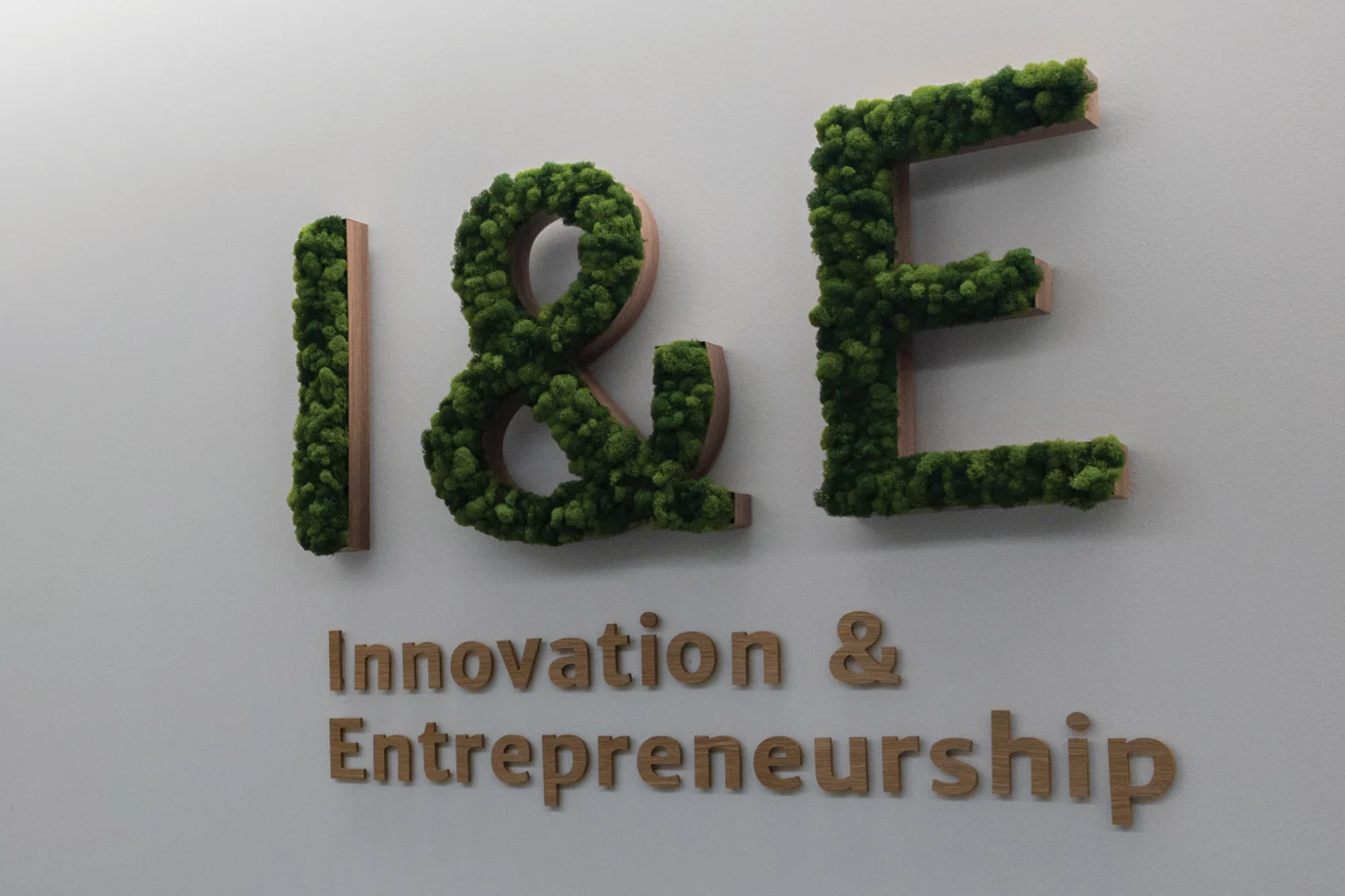
The Signs Are Alive
The building’s architects worked with design firm Cloud Gehshan on Fahy’s signage. The firm recommended these living moss signs for each of Fahy’s major “tenants” to help tie together the biophilic elements of the building. They were manufactured by a third party signage company and need minimal care.


